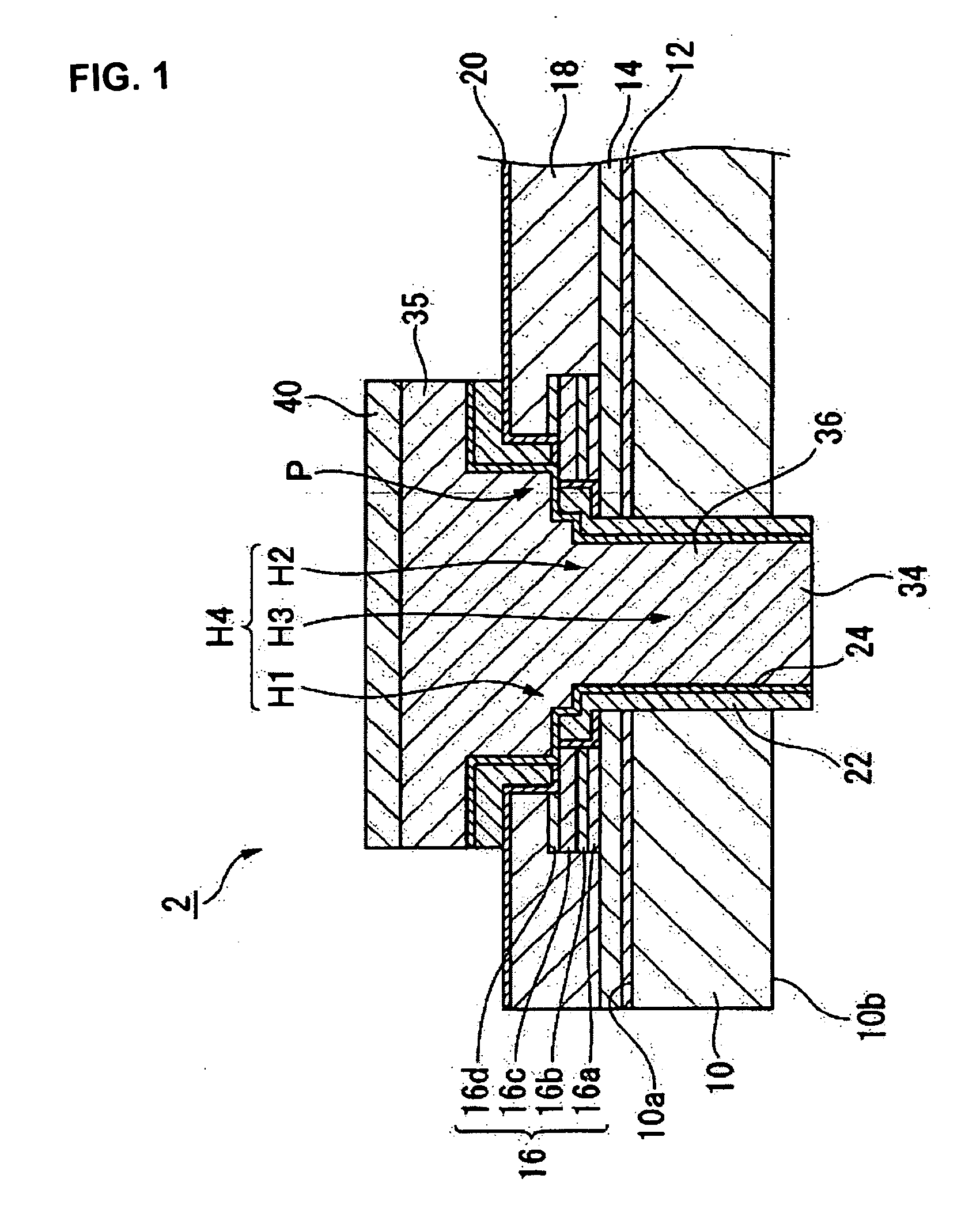Semiconductor device, method for producing the same, circuit board, and electronic apparatus
a semiconductor and semiconductor technology, applied in the direction of semiconductor/solid-state device details, semiconductor devices, electrical devices, etc., can solve the problems of substrate warpage, difficult mounting of semiconductor chips on wiring boards, and difficult stacking of semiconductor chips, so as to reduce the internal stress or thermal expansion coefficient of the insulating layer acting on the substrate, reduce the internal stress or thermal expansion coefficient of the insulating layer, and reduce the effect of substrate warpag
- Summary
- Abstract
- Description
- Claims
- Application Information
AI Technical Summary
Benefits of technology
Problems solved by technology
Method used
Image
Examples
first embodiment
[0038] A semiconductor chip, which is a semiconductor device according to a first embodiment of the invention, will first described with reference to FIG. 1. FIG. 1 is a side cross-sectional view of an electrode of a semiconductor chip 2 according to the first embodiment. The semiconductor chip 2 includes a substrate 10 in which an integral circuit is formed, and an electrode 34. The electrode 34 is formed in a through hole H4 across an active face 10a and the rear face 10b of the substrate 10. A first insulating film 22 is disposed between the electrode 34 and the inner wall of the through hole H4.
[Semiconductor Device]
[0039] The semiconductor chip 2 shown in FIG. 1 has an integral circuit (not shown) constituted from electronic devices such as transistors, memory devices, and the like, on the surface 10a of the substrate 10 composed of silicon and the like. On the active face 10a of the substrate 10, an insulating film 12 composed of silicon oxide (SiO2) or the like is disposed....
second embodiment
[0081] In the first embodiment, the first insulating film 22 is etched before the electrode 34 is formed in the concavity H0. In the second embodiment, the first insulating film 22 is etched after the electrode 34 is formed in the concavity H0. The second embodiment will now be described with reference to the drawings. The descriptions of the steps identical to the first embodiment are omitted to avoid redundancy.
[0082] The first insulating film 22 is formed on the substrate 10 by the steps shown in FIGS. 2A to 3A. Then, the base film 24 is formed to cover the surface of the electrode pad 16 and the first insulating film 22, as shown in FIG. 12A. Thus, this embodiment differs from the first embodiment in which the first insulating film 22 is etched before the formation of the base film 24. In the second embodiment, the base film 24 is formed by the same technique as described in the first embodiment.
[0083] Next, the electrode 34 shown in FIG. 12B is formed. In particular, a resist...
PUM
 Login to View More
Login to View More Abstract
Description
Claims
Application Information
 Login to View More
Login to View More - R&D
- Intellectual Property
- Life Sciences
- Materials
- Tech Scout
- Unparalleled Data Quality
- Higher Quality Content
- 60% Fewer Hallucinations
Browse by: Latest US Patents, China's latest patents, Technical Efficacy Thesaurus, Application Domain, Technology Topic, Popular Technical Reports.
© 2025 PatSnap. All rights reserved.Legal|Privacy policy|Modern Slavery Act Transparency Statement|Sitemap|About US| Contact US: help@patsnap.com



